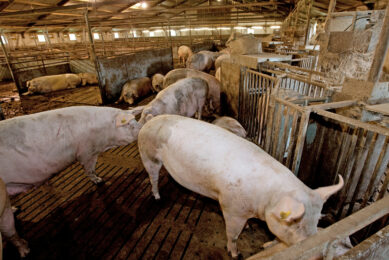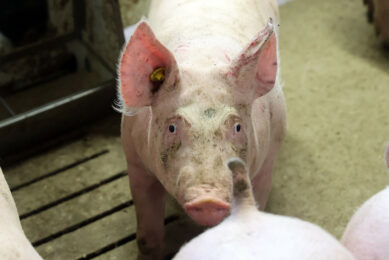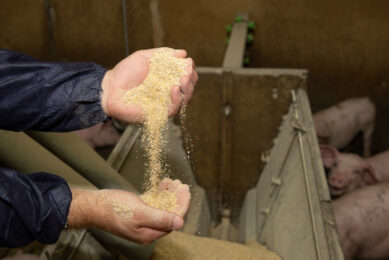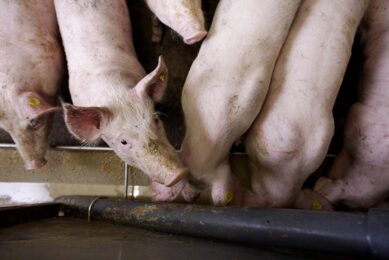Influenza in Chinese pigs – fake news or not?
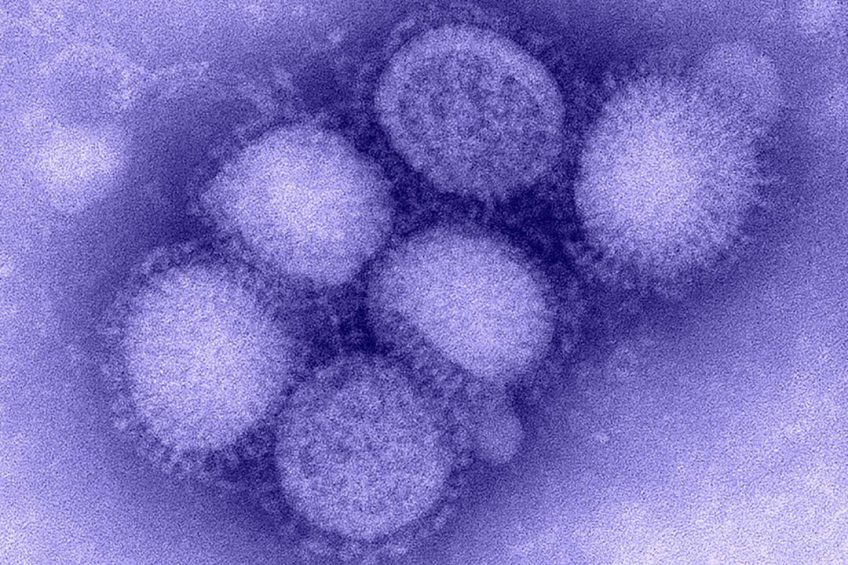
A news item on H1N1 influenza with ‘pandemic potential’ hit the news a few weeks ago. It became big news all over the world. Some readers in the pig industry felt the topic was a hype and Pig Progress should not have reported about it. Pig Progress editor Vincent ter Beek explains his motives why it was published.
About 2 weeks ago the news broke which combined the words ‘swine’, ‘China’, ‘influenza’ and ‘pandemic’. I am sure you remember. Major news sources jumped on top of this story, including the BBC, CNN, Fox News and the Frankfurter Allgemeine, just to name a few, spread out over the world. From various sides inside and outside the industry, the news reached me as well.
Seeing that it was the result of a peer-reviewed scientific study which could be found back, I thought it would be worth reporting on for Pig Progress. For those who did not know what it was all about – this is what I wrote about it at the time.
One of the main sources for the article was the original abstract – and I still stand by its contents.
“No news” and “stoking fears”
Just to paint some context: it was practically the last thing I did before I embarked on my first few holidays since the beginning of the Covid-19 crisis. Unfortunately my inbox kept distracting me during my absence. I received a few messages from professionals in the swine industry who were critical about reporting the news – and how that had been done.
Main messages: it would not be news, the article would be ‘stoking fears’ and the virus wouldn’t have spread anywhere else. The virus had already been existing since 2016 and it’s commonly known that influenza viruses can jump to humans. So the fact that this relatively new influenza virus could jump to humans would not be a surprise, merely a confirmation that biology is still ticking the same.
Pig Progress experts talk
To read more Pig Progress expert opinions
H1N1 virus does not spread amongst humans
Fair enough. Ever since, that view has been shared by various experts from the swine industry. For instance, Prof Arjan Stegeman at Utrecht University, the Netherlands, commented: “It is a combination of 3 viruses, including a swine influenza virus and the Mexican flu. This type of varieties do come into existence regularly in pigs and it is not uncommon for them to be transferred to humans. To become pandemic, however, they will have to be spreading efficiently amongst humans and that is not the case here.”
In addition, Dr Paul Sundberg of the US Swine Health Information Center, added in an overview that Eurasian avian-lineage H1N1 strains, “including G4, have not been found in human or swine surveillance mechanisms in the USA.”
He also added that “Tests conducted on G4 EA H1N1 suggest this group of swine influenza viruses may pose a potential risk, however, no greater risk than other swine strains evaluated in similar tests.”
Everything the experts had to say was fair comment, and I must admit it is good to be able to put everything into more perspective.
Considerations to publish the news
There were a few considerations for me, however, that did make it a subject worth covering in Pig Progress as well.
- The article was the result of scientific research – and even in the abstract of the peer-reviewed article, the words ‘candidate pandemic virus’ were mentioned. It was not the result of a very active university communications department aiming to give the scientific article a more juicy spin than it actually had.
- The study was carried out on many pig farms in various provinces in the world’s largest pig country.
- As major news outlets all over the world reported about it, the buzz itself was part of it becoming news, which is reflected in how the Pig Progress article was built up. I took care, however, to focus on the facts related to the pigs and not focus strongly on the ‘pandemic’ element.
Original title was unfortunate
So was it fake news or not? I would agree to comments saying that the original title was unfortunate in its expression. Although I took care not to use ‘pandemic’ in the headline, there was still something else. It read “China: New pig virus can jump from pigs to humans.”
Well – new – the virus had been existing since at least 2016, so ‘new’ was perhaps not the best choice. Would we have left ‘new’ out, however, the headline however could have been even interpreted more generally as well as dramatically.
That is why the original news item has now been given a fairly general heading to avoid any possible misunderstanding.
More expert context is advisable
I would also agree that providing more expert context to certain scientific news is always advisable – and time permitting, I will strive to more frequently include that in future reports about scientific developments.
I disagree, however, that Pig Progress should choose to be silent about things or only report about what the swine community has to say about it. However much the swine business will know exactly how and why things are being done, the world does not only consist of the swine community’s view to things.
I do hope, however, that this personal blog will convince any reader that at Pig Progress we are doing our genuine best trying to keep the pig community informed about what is going on – even when it may not always be what you had hoped to read.
I do look forward to receiving your feedback – and don’t worry, this week there’s no further holiday awaiting me.



